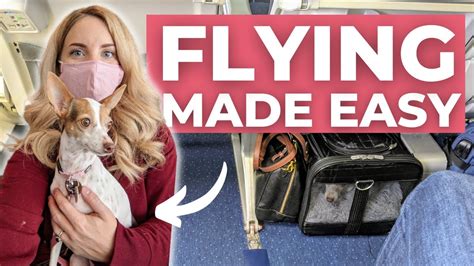How To Fly With Your Dog: A Comprehensive Guide for Stress-Free Travel
Flying with your furry friend can seem daunting, but with careful planning and preparation, it can be a smooth and enjoyable experience for both of you. This comprehensive guide will walk you through everything you need to know to fly with your dog, ensuring a safe and comfortable journey.
Before You Fly: Essential Preparations
Before you even think about booking your flight, there's crucial groundwork to lay. Failing to prepare properly can lead to significant delays or even prevent your dog from traveling with you.
1. Airline Regulations:
This is arguably the most important step. Airline regulations regarding pet travel vary significantly. Some airlines have stricter rules than others, and these rules can change, so always check directly with your airline at least six weeks before your flight. Confirm:
- Accepted breeds and sizes: Some airlines have restrictions on brachycephalic (short-nosed) breeds due to breathing difficulties at altitude. Size restrictions also apply, often determining whether your dog travels in the cabin or as cargo.
- Pet carrier requirements: Your airline will specify the type of carrier acceptable, its dimensions, and ventilation requirements. Ensure your carrier meets these specifications exactly.
- Health certificates and documentation: You'll likely need a health certificate from your veterinarian, often within a specific timeframe before your flight. Some destinations require additional paperwork or vaccinations.
- In-cabin vs. cargo: Understand the differences and choose the best option for your dog's comfort and safety. Flying in the cabin is generally preferred for smaller dogs, offering more direct supervision. Cargo travel is often necessary for larger dogs but presents higher risks.
2. Veterinary Check-up:
Schedule a thorough vet check-up well in advance of your flight. Your vet can:
- Issue the necessary health certificates.
- Assess your dog's fitness to fly. Some dogs, due to age, health conditions, or anxiety, may not be suitable for air travel.
- Provide medication for anxiety or motion sickness (if needed).
- Discuss potential risks and recommend preventative measures.
3. Choosing the Right Carrier:
Selecting the appropriate carrier is vital. Look for a carrier that is:
- Airline-approved: Confirm it meets your airline's size and material specifications.
- Well-ventilated: Good airflow is critical to prevent overheating.
- Spacious enough: Your dog should be able to stand, turn around, and lie down comfortably.
- Secure: The carrier must be sturdy and have secure latches to prevent escape.
- Comfortable: Consider adding a soft bedding for your dog's comfort.
On the Day of Travel: Tips for a Smooth Journey
Even with meticulous preparation, flying with a dog can be stressful. Here's how to mitigate that stress:
1. Hydration and Feeding:
Withhold food for a few hours before the flight to avoid accidents. Offer water sparingly to prevent overhydration.
2. Familiar Items:
Include familiar items in the carrier, such as a favorite toy or blanket, to provide comfort and reduce anxiety.
3. Minimize Stress:
Keep your dog calm and relaxed throughout the process. Avoid overly exciting interactions before and during the flight.
4. Monitor Your Dog:
Keep a close eye on your dog throughout the flight (if in-cabin) and check on them regularly with airline staff (if in cargo).
Post-Flight Care: Settling Back In
Once you arrive, allow your dog time to adjust to their new surroundings. Offer water and let them settle in their new space. Monitor them for any signs of distress or discomfort.
Flying with your dog requires planning and preparation. However, by following these steps, you can significantly increase the chances of a safe and pleasant journey for both of you. Remember, always prioritize your dog's safety and comfort.
